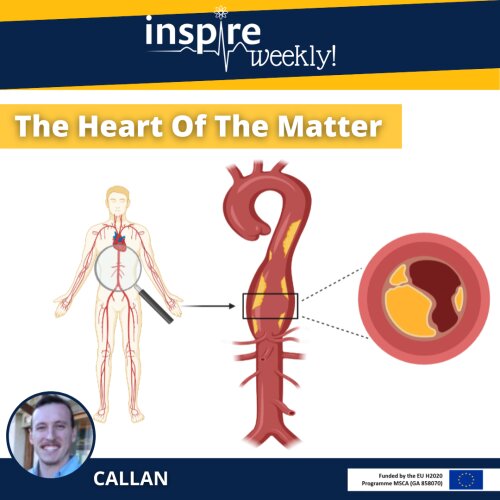09/03/2022 - Callan (ESR#10)

Atherosclerosis is the underlying cause of many cardiovascular diseases. Atherosclerosis is characterized by the buildup of fatty deposits, known as plaques, within the arterial walls of the large arteries (as indicated on the two right images). Normal healthy arteries are flexible and elastic in nature allowing unobstructed blood flow. However, the formation of plaques lead to the arteries becoming progressively narrower and less compliant. The implications of these actions are severe, as occlusion to the blood flow is worsened with continuation of plaque development. The most important clinical complication arises when a plaque becomes unstable, leading to the formation of a blood clot or thrombus due to an acute occlusion in the artery (Lusis 2000). This can be life threatening as it results in either a myocardial infarction or stroke. Atherosclerosis is one of the leading causes of death worldwide (Pattarabanjird, Li et al. 2021). Therefore, indicating the importance of studying such a disease and the pathological processes compounds/drugs may have on the cardiovascular system. To this end, researchers use a number of genetically engineered mouse models (e.g. apolipoprotein E or LDL receptor knockout mice) that mimic various aspects of human plaques.
Animal models mimicking human diseases are implemented in order to understand the potential efficacy and mode of action of novel pharmaceuticals. This is monumental in safety risk compounds pose in clinical and non-clinical studies helping to gain insight and understanding of the mechanism of a particular toxicity.
References:
- Lusis, A. J. (2000). "Atherosclerosis." Nature 407(6801): 233-241.
- Pattarabanjird, T., et al. (2021). "B Cells in Atherosclerosis: Mechanisms and Potential Clinical Applications." JACC Basic Transl Sci 6(6): 546-563.